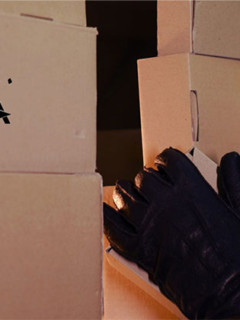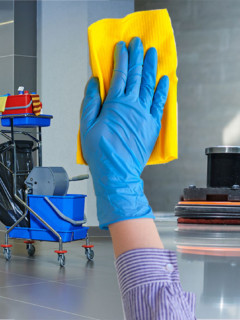Hand washing is essential. According to the Robert Koch Institute, hand hygiene measures are among the most important infection prevention measures in the fight against infectious diseases. No matter in which field of activity, hygiene always plays a role. On a desk, for example, there are 500 times as many bacteria as on a toilet…! And up to 80 per cent of all infectious diseases are transmitted via the hands. Simply washing your hands can protect you against most bacteria and viruses. The Corona virus also belongs to the so-called enveloped viruses, whose viral envelope, which consists of fats among other things, is dissolved by soap, whereby the virus can be effectively inactivated.
Even if our hands are not visibly dirty, millions of bacteria cavort on them; under a fingernail alone, for example, there can be 3 million bacteria. This makes the hands one of the primary transmission routes for infectious diseases: Up to 80 percent of all infectious diseases are transmitted via the hands. No wonder, because our hands are in constant contact with doorknobs, bus and train handles, smartphone displays, etc., on which a multitude of germs can be found – and we shake hands with different people every day. While there are about 50 germs on a washed hand, an unwashed hand can be home to over 10 million germs.
In general, hands should be washed in the following cases:
- If they are visibly soiled
- After going to the toilet
- Before and after handling food, i.e. before cooking, food preparation and eating
- Before using medicines or cosmetics
- After sneezing, blowing the nose and coughing
- After contact with sick people or after treating wounds
- After contact with animals
- After contact with waste
- After shopping, riding the bus (...) and other occasions where (holding) handles are used by many people
- Before starting work and before leaving the workplace, as well as when coming home
How to wash hands properly
From childhood we are taught “Don’t forget to wash your hands after going to the toilet and after eating!” but apparently many adults forget what they have learned. Although 94% of those questioned in a forsa survey commissioned by the Federal Centre for Health Education (BzgA) stated that they wash their hands after going to the toilet, in fact only 70% wash their hands and only 30% wash their hands with soap. Every 5th woman and every 10th man do not wash their hands thoroughly enough. However, regular and thorough hand washing is the most efficient way to remove germs from the hands. Several studies have even found that thorough hand washing almost halves the risk of diarrhoeal diseases.
Proper hand washing requires care and should be done in five steps:
- First hold the hands under running water. The temperature of the water does not matter, but it should not be too hot – because this damages the acid mantle of the skin.
- Soap your hands thoroughly – the palms as well as the backs of your hands, the tips of your fingers, the spaces between your fingers and your thumbs. Also remember to clean your fingernails. Liquid soaps are more hygienic than bars of soap, especially in public washrooms.
- Gently rub the soap into all areas, taking plenty of time to do so.
- Rinse hands under running water afterwards. In public toilets, use a paper to wel or your elbow to close the tap.
- Finally, dry your hands carefully, including the areas between your fingers. Microorganisms can survive and multiply better in a moist environment. Drying your hands is therefore just as important as washing them. Disposable towels are best suited for this purpose. Another advantage of paper towel dispensers is that they are the least likely to contaminate the washroom with germs.
Netdoctor shows how to do it properly in a video. As a rule of thumb, washing your hands should take at least 20-30 seconds.
If the hands are particularly dirty with resins or lubricants, for example in workshops, they must of course be washed for longer; special hand cleaners also remove stubborn dirt.
When to disinfect?
When coming into contact with sick people, for example in clinics or care facilities, and when working with food, disinfectants should also be used to clean the hands; here, too, the recommended exposure times should be observed when using them.
Incidentally, 20 seconds of hand washing is roughly equivalent to humming the Happy Birthday song twice. And the time invested is worth it, because washing hands for 30 seconds drives away 99.9 % of germs!















